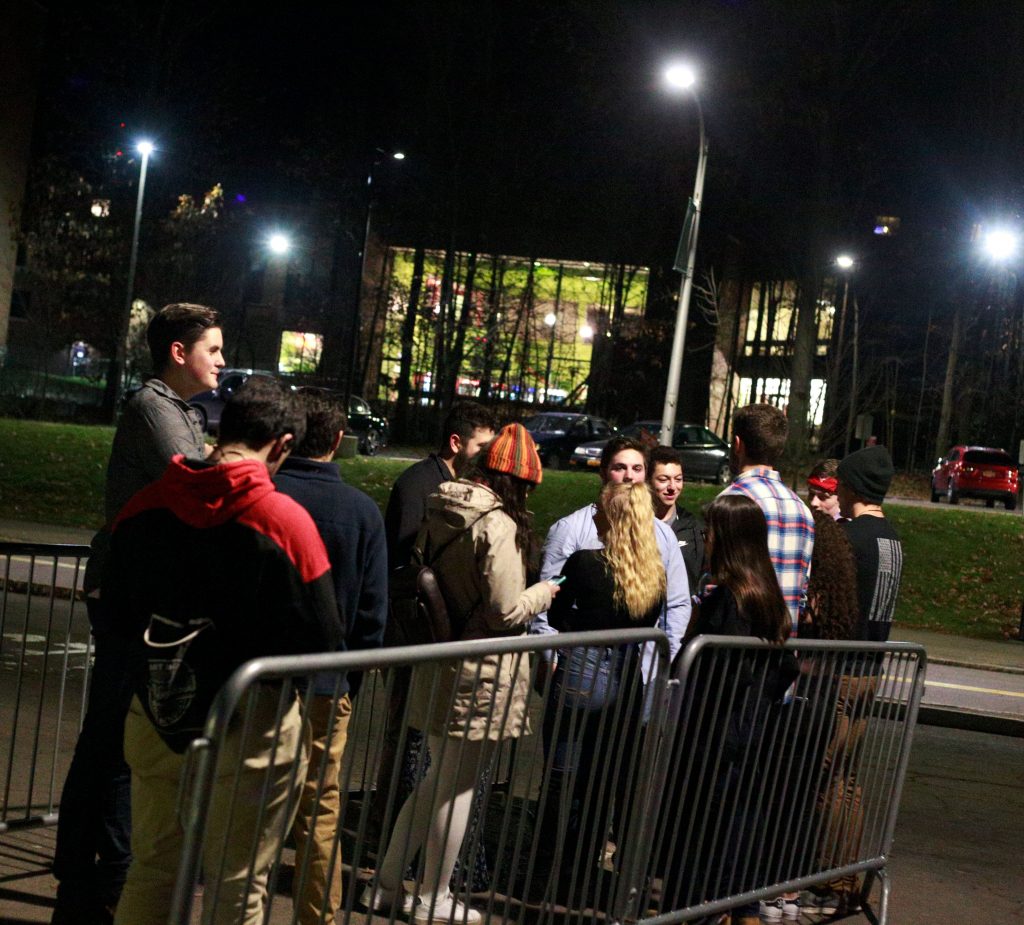
It’s late Saturday night in Downtown Binghamton ― technically Sunday morning. A crowd of students has formed on the corner of State and Hawley streets, waiting for the Downtown Center Leroy Inbound bus back to campus. When the blue bus rounds the corner, students start pushing, fighting for one of the nearly 40 seats on board.
This semester, Off Campus College Transport (OCCT) has reinstated its no-standing policy, effective Friday and Saturday night after midnight. During this time, OCCT will only allow passengers to board if seats are available, so students won’t be allowed to stand in the aisle.
According to Glenell Jaquez, ‘16, OCCT’s public relations coordinator, the measure has been in place at several points during OCCT’s history.
“It’s been on and off,” Jaquez said. “We had semesters where we took it away, but we decided to bring it back this semester for safety reasons.”
Late Nite buses, which run on Friday and Saturday after midnight, are sometimes delayed or canceled due to students vomiting on the ride from State Street to campus. Jaquez said this problem, along with crowd-control issues, led OCCT to revive the no-standing policy.
“Once there is a biohazard on the bus, it has to be taken offline,” Jaquez said. “That contributes to a lot of late and canceled runs, and often, with all the time we’re putting into getting another bus, we don’t have time to alert students through social media.”
Each bus can sit about 36 students, although the exact number varies depending on the bus. While standing will be prohibited on Late Nite buses, riders will be able to stand on outbound buses going Downtown before midnight. OCCT said they won’t run additional buses to make up for the decreased number of people able to take the buses back to campus.
“We feel bad that we can’t take the same number of people back to campus as we bring Downtown, but even with monitors, people are a little hard to manage at night,” Jaquez said. “It goes down to being able to control the crowd.”
Jonathan Rettig, a sophomore majoring in psychology, said the new policy will only make crowds worse, because students will be vying for a limited number of spots on the bus.
“I would rather people get to stand because I have had to wait two extra buses trying to get back to campus because no one could stand,” Rettig said. “When less people are allowed on the bus, people push harder to try to get to the front of the line.”
Seth Price, an undeclared freshman, said he could see the benefits to the no-standing policy.
“Although it may seem annoying to have to wait in line longer than usual, it definitely benefits the overall well-being of students,” Price said. “Whenever you put that many young adults in one area that are most likely inebriated, something bad is bound to happen. It’s always better to be safe than sorry.”
Jaquez said he encourages students with strong feelings on the policy, whether against or in support, to contact OCCT via the company’s feedback form, which can be found on its website.


